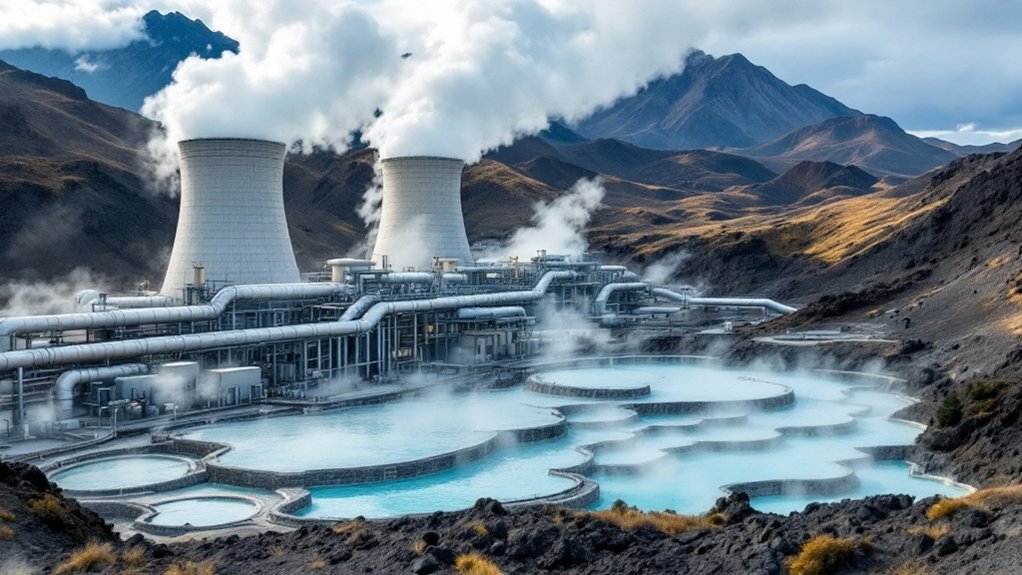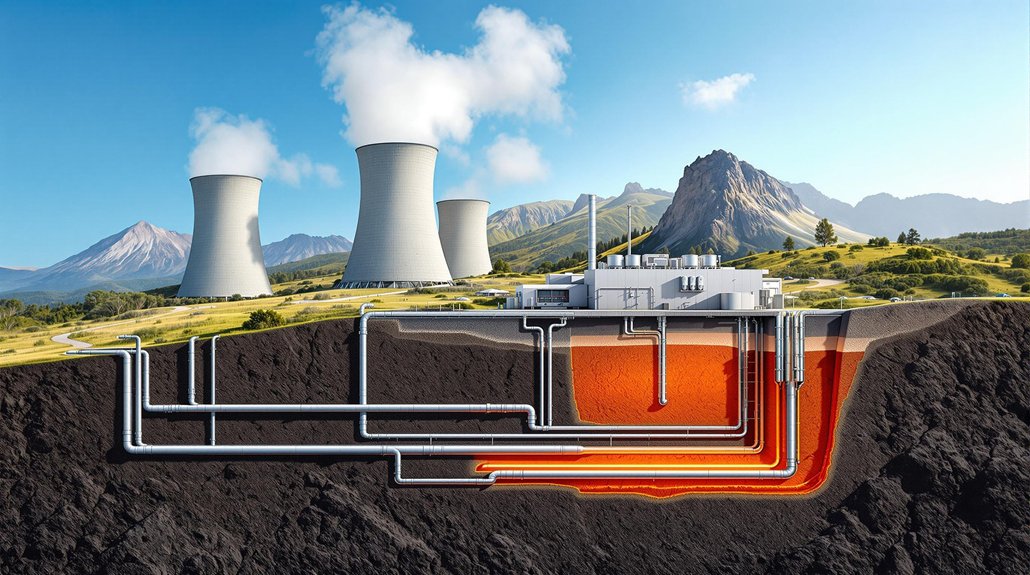Geothermal energy taps into Earth’s natural furnace through specialized wells and power plants. These facilities extract underground heat in three main ways: dry steam plants use direct steam, flash steam plants convert hot water to steam, and binary plants transfer heat to a second fluid. Enhanced Geothermal Systems even create artificial reservoirs by fracturing hot rock. While drilling costs aren’t cheap, these plants run 24/7, unlike their fickle solar and wind cousins. There’s more beneath the surface of this renewable powerhouse.

Earth’s core is basically a giant furnace, and we’re finally getting smart about tapping into it. Deep underground, vast reservoirs of heat are just waiting to be harnessed, and we’ve figured out multiple ways to do it. Power plants extract this heat through wells, using the steam to spin turbines and generate electricity. It’s not rocket science – just good old thermodynamics at work. Low operational costs make geothermal wells an attractive long-term investment.
These geothermal power plants come in three flavors: dry steam, flash steam, and binary cycle. They’re like the triple threat of the geothermal world, each with its own way of turning underground heat into usable power. The best part? They run 24/7, unlike their moody cousins solar and wind. No sun? No problem. No wind? Who cares. In Hawaii, the Puna Geothermal facility supplies nearly a quarter of the state’s electricity needs. The small footprint of these facilities makes them an efficient use of land compared to other renewable energy sources.
But electricity isn’t the only game in town. Direct use applications skip the whole power generation dance and use the heat straight up. From heating entire districts to keeping greenhouses toasty, geothermal heat gets the job done with minimal fuss. Even better, heat pumps can work practically anywhere – no hot springs required. They’re like underground air conditioners that work in reverse, and they cut electricity use by up to 60%.
The really exciting stuff is happening with Enhanced Geothermal Systems. Imagine this: engineers creating artificial reservoirs by cracking hot, dry rock and pumping water through it. It’s like fracking’s more environmentally conscious cousin. The western U.S. alone could potentially generate 500,000 MW from these systems. That’s a lot of juice.
Of course, it’s not all sunshine and rainbows. Drilling these wells is expensive – we’re talking 30-50% of total project costs. And yes, there’s some natural gas emissions and the occasional induced earthquake to worry about. But compared to fossil fuels? It’s a walk in the park.
With proper management, these systems can keep churning out clean energy for over 30 years. Talk about a long-term relationship with Mother Earth.








